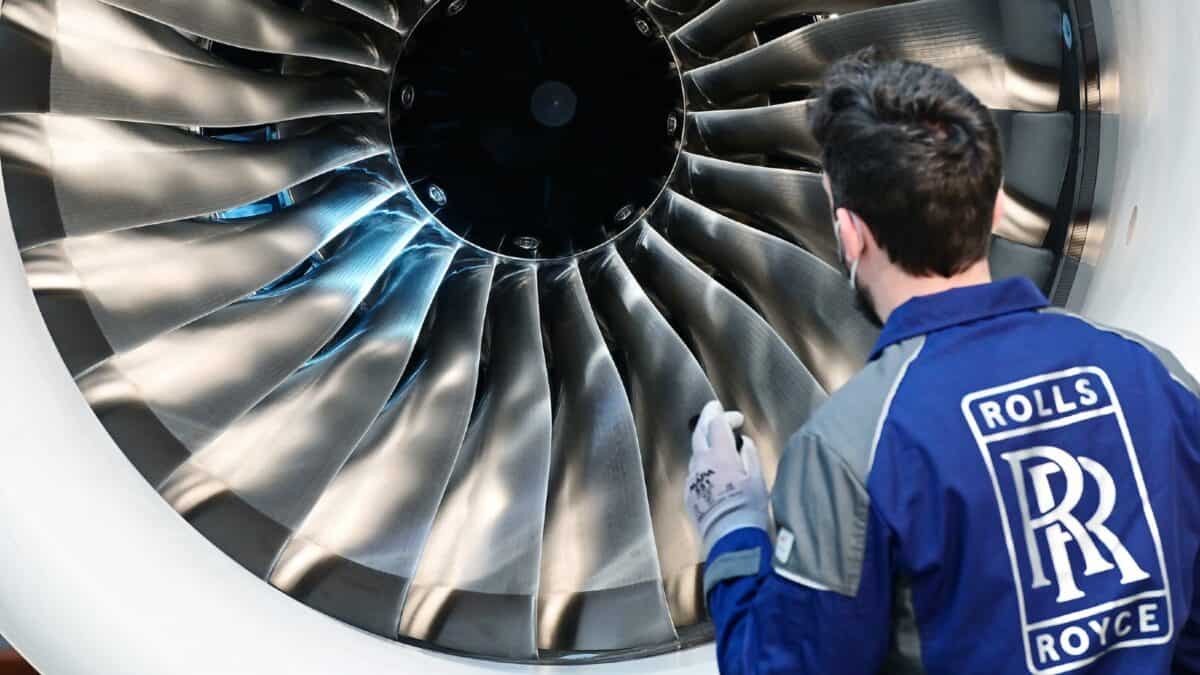
Image source: Rolls-Royce plc
Just a few years ago, shares in Rolls-Royce (LSE: RR) changed hands for pennies. Since then they have been on an incredible tear. The Rolls-Royce share price now sits above £8. Some investors may be eyeing the possibility of it hitting £10.
As a long-term investor though, my eyes are on a bigger prize. I am wondering whether the share might yet get to £20 over the coming decade. If so, ought I to invest now in anticipation?
What a £20 price would mean in numbers
To put that into perspective, it would require a rise of around 133% in the Rolls-Royce share price. That is heady stuff, although the shares have performed stunningly in recent years.
They are already up 820% in five years, so a 133% rise seems almost modest by comparison.
The current market capitalisation is around £73bn, so if the share count remains the same and the share price hits £20, it would become around £169bn.
Here, I feel, we reach a stumbling block. That market-cap would, by today’s standards, make Rolls-Royce the most valuable company on the FTSE 100. Currently, that spot is held by AstraZeneca with its £161bn market-cap.
Now in years to come, other companies may well grow too and a £169bn market-cap may no longer be enough to land Rolls at the top of the board by size. However, the prospect of a £169bn market-cap makes me pause for thought.
Five years ago Rolls was on its knees. Massively diluted, its existing shareholders had a very uncertain future. Could such a business go on to become the country’s biggest in just a few years?
It is possible, but seems odd to me. The bedrock of investors’ confidence in Rolls’ business does not seem that deep when stepping back and looking at the longer-term picture, including five years ago.
Valuation concerns
Currently, Rolls-Royce trades on a share price-to-earnings (P/E) ratio of 29. That already is too high for my tastes, although it is exactly in line with fellow UK defence contractor BAE Systems.
Without earnings growth, a £20 share price would imply an even more dizzying P/E ratio of 68. That seems ridiculous to me for a mature company in a mature industry.
However, Rolls-Royce has set out ambitious financial targets. They include a medium-term target of £3.6bn-£3.9bn in annual underlying operating profit.
That is not the same as earnings (non-operating items including finance and investment costs or gains, as well as any exceptional items, are what separates the two metrics). But at the high end of that range, the P/E ratio (using underlying operating profit) would be 43. I see that as high, but not unimaginably so. Plus, those are medium-term targets. Longer term, earnings may be even higher.
Or they may not. A weak economy could hurt civil aviation demand and Rolls’ order book. Elevated defence spending in Europe may be a fad not a structural change. Just as five years ago, a sudden external shock outside the company’s control such as a pandemic or terrorist attack could see plane sales and servicing orders slump overnight.
I do not think those risks are properly priced in, even at today’s Rolls-Royce share price, let alone a higher one. So I will not be investing.









